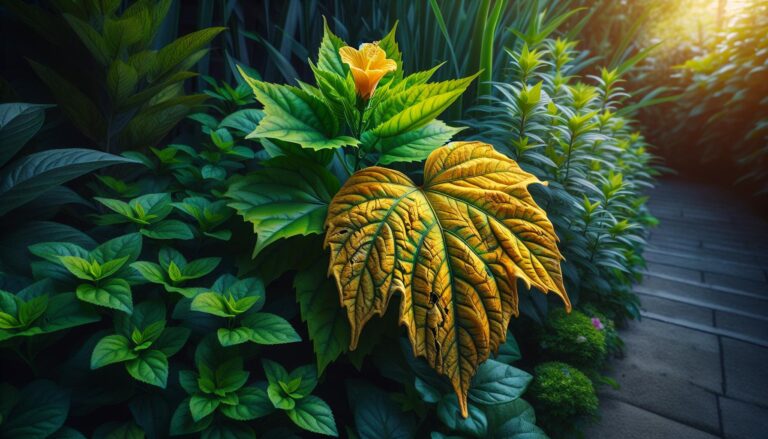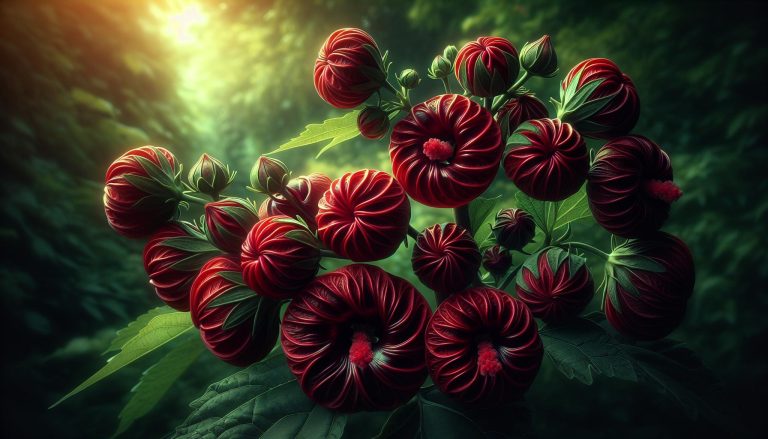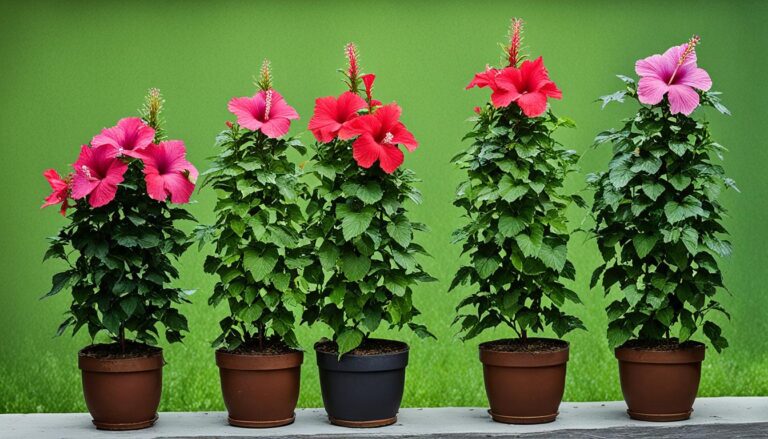Should You Cut Yellow Leaves on Hibiscus? Tips for Healthy Plant Care
As a passionate gardener, I’ve often faced the dilemma of whether to snip off those pesky yellow leaves on my beloved hibiscus plants. It’s a common question that many plant enthusiasts grapple with. After all, those vibrant blooms are what we’re after, right?
But here’s the thing: yellow leaves on a hibiscus can be more than just an eyesore. They might be trying to tell us something important about the plant’s health. So, should you reach for those pruning shears or leave well enough alone? The answer isn’t always straightforward, but understanding the reasons behind yellowing leaves can help us make the best decision for our plants.
Understanding Yellow Leaves on Hibiscus Plants
Yellow leaves on hibiscus plants often signal underlying issues that require attention. Identifying the specific cause is crucial for determining the appropriate course of action.
Common Causes of Yellow Leaves
Yellow leaves on hibiscus plants stem from various factors:
- Nutrient deficiencies: Lack of iron, nitrogen, or magnesium
- Overwatering: Soggy soil leading to root rot
- Underwatering: Insufficient moisture causing stress
- Pest infestations: Aphids, spider mites, or whiteflies
- Disease: Fungal or bacterial infections
- Temperature stress: Exposure to extreme cold or heat
- Sunlight issues: Too much or too little light
- Natural aging: Older leaves yellowing and falling off
Understanding these causes helps in diagnosing and addressing the specific problem affecting your hibiscus plant.
Identifying Healthy vs. Unhealthy Yellow Leaves
Distinguishing between normal and problematic yellow leaves is essential:
Healthy yellow leaves:
- Occur on older, lower branches
- Appear gradually and evenly
- Fall off naturally without intervention
Unhealthy yellow leaves:
- Develop on new growth or throughout the plant
- Show irregular patterns or spots
- Remain attached to the plant, often curling or wilting
Examining the location, pattern, and progression of yellowing helps determine whether the leaf discoloration is a natural process or a sign of an underlying issue requiring attention.
The Pros of Removing Yellow Leaves
Removing yellow leaves from hibiscus plants offers several benefits for overall plant health and aesthetics. Let’s explore the advantages of pruning these discolored leaves.
Improving Plant Appearance
Cutting off yellow leaves instantly enhances the visual appeal of hibiscus plants. By removing unsightly foliage, I’m able to showcase the vibrant green leaves and colorful blooms that make hibiscus a popular ornamental choice. This pruning practice also promotes a more balanced and fuller appearance, as the plant’s energy is redirected to healthy growth. Regular removal of yellow leaves encourages new leaf development, resulting in a lush, thriving hibiscus with improved overall structure.
Preventing Disease Spread
Removing yellow leaves is crucial in preventing the spread of diseases in hibiscus plants. Yellowing leaves often indicate underlying health issues, such as fungal infections or pest infestations. By promptly cutting off affected foliage, I’m eliminating potential sources of disease that could spread to healthy parts of the plant. This proactive approach helps contain infections, reducing the risk of further damage to the hibiscus. Additionally, removing diseased leaves improves air circulation within the plant, creating an environment less conducive to pathogen growth and reducing the likelihood of future outbreaks.
The Cons of Cutting Off Yellow Leaves
While removing yellow leaves from hibiscus plants offers benefits, it’s important to consider potential drawbacks. Pruning yellow leaves can have unintended consequences that may affect the plant’s overall health and growth.
Potential Stress to the Plant
Cutting off yellow leaves can stress hibiscus plants, especially if done excessively. Pruning triggers a wound response, redirecting energy to heal the cut areas instead of focusing on growth and bloom production. Overzealous pruning may weaken the plant, making it more susceptible to pests and diseases. I recommend removing only severely damaged or diseased leaves to minimize stress on the hibiscus.
Loss of Photosynthesis Capability
Yellow leaves, though not as efficient as green ones, still contribute to photosynthesis. Removing them reduces the plant’s overall photosynthetic capacity, potentially slowing growth and flower production. Partially yellow leaves often continue to provide nutrients to the plant. I suggest allowing leaves with only slight yellowing to remain on the hibiscus, as they’ll continue supporting the plant’s energy production until they naturally fall off.
When to Remove Yellow Leaves from Hibiscus
Timing is crucial when removing yellow leaves from hibiscus plants. I’ll guide you through the seasonal considerations and plant health indicators to help you make informed decisions about leaf removal.
Seasonal Considerations
Hibiscus plants have different needs throughout the year, affecting when to remove yellow leaves:
- Spring: Remove yellow leaves to promote new growth as the plant emerges from dormancy.
- Summer: Cut off severely damaged leaves to maintain the plant’s energy for bloom production.
- Fall: Limit leaf removal to prepare the plant for winter dormancy.
- Winter: Avoid removing yellow leaves unless they’re diseased, as the plant needs energy reserves.
Plant Health Indicators
Observing specific signs helps determine when to remove yellow leaves:
- Leaf color: Remove leaves that are completely yellow or brown.
- Leaf texture: Discard leaves that are crispy, dry, or have a papery feel.
- Pest infestation: Cut off leaves with visible insect damage or eggs.
- Disease symptoms: Remove leaves showing signs of fungal or bacterial infections.
- Position on the plant: Prioritize removing yellow leaves from the bottom of the plant.
- Overall plant vigor: Limit leaf removal on stressed or weak plants to preserve energy.
By considering these seasonal factors and plant health indicators, I ensure my hibiscus remains healthy and vibrant throughout the year.
Proper Techniques for Removing Yellow Leaves
Removing yellow leaves from hibiscus plants requires care and precision. I’ll outline the best tools and methods for this task, as well as the essential aftercare steps to ensure your hibiscus thrives post-pruning.
Tools and Methods
I use clean, sharp pruning shears or scissors to remove yellow leaves from hibiscus plants. Sterilizing tools with rubbing alcohol before and after use prevents disease spread. For small yellow leaves, I gently pull them off by hand, ensuring the entire leaf and its stem are removed. When dealing with larger leaves, I cut them at the base where they meet the main stem, making a clean 45-degree angle cut to promote healing. I avoid tearing or ripping leaves, as this can damage the plant and invite pests or diseases.
Aftercare for Pruned Hibiscus
After removing yellow leaves, I focus on providing optimal care to support the hibiscus’s recovery. I water the plant deeply, ensuring the soil is moist but not waterlogged. Applying a balanced, water-soluble fertilizer helps replenish nutrients and encourages new growth. I monitor the pruned areas for signs of stress or infection, such as discoloration or unusual growth. Providing adequate sunlight and maintaining proper humidity levels aid in the plant’s recovery. I avoid overwatering or fertilizing excessively, as this can stress the plant further. Regular inspection for pests or diseases ensures early detection and treatment if needed.
Preventing Yellow Leaves on Hibiscus
Preventing yellow leaves on hibiscus plants requires proactive care and attention to their growing conditions. I’ll outline key strategies to maintain healthy, vibrant foliage on your hibiscus plants.
Proper Watering and Fertilization
Proper watering and fertilization are crucial for preventing yellow leaves on hibiscus plants. I water my hibiscus deeply but infrequently, allowing the top inch of soil to dry between waterings. This approach prevents both overwatering and underwatering, which can cause yellowing leaves. For fertilization, I use a balanced, water-soluble fertilizer with an NPK ratio of 10-10-10 or 20-20-20 every 2-3 weeks during the growing season. Hibiscus plants benefit from additional iron, so I incorporate iron supplements or use an iron-rich fertilizer to maintain lush, green foliage.
Pest and Disease Management
Effective pest and disease management is essential for preventing yellow leaves on hibiscus plants. I regularly inspect my hibiscus for common pests like aphids, whiteflies, and spider mites, which can cause leaf discoloration. To control these pests, I use insecticidal soap or neem oil, applying it every 7-10 days until the infestation is eliminated. For disease prevention, I ensure good air circulation around the plant by pruning dense foliage and avoiding overhead watering. If fungal diseases appear, I promptly remove affected leaves and apply a copper-based fungicide according to the product instructions.
Conclusion
Deciding whether to cut off yellow leaves on your hibiscus requires careful consideration. While removing diseased or dead foliage can benefit the plant’s health and appearance, it’s crucial to address the underlying causes. By implementing proper care techniques, such as adequate watering, balanced fertilization, and vigilant pest management, you’ll promote vibrant growth and minimize yellow leaf occurrences. Remember, a healthy hibiscus is a resilient one. With the right approach, you’ll enjoy lush, green foliage and stunning blooms year-round.






